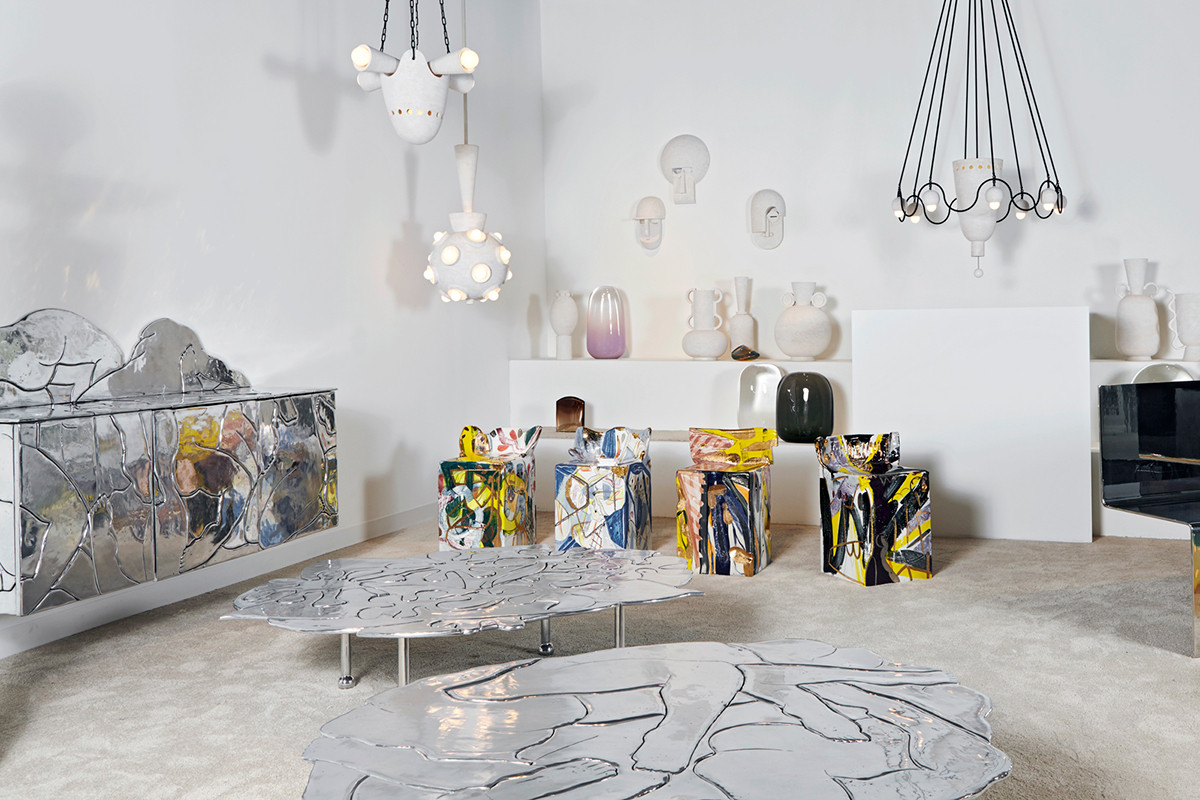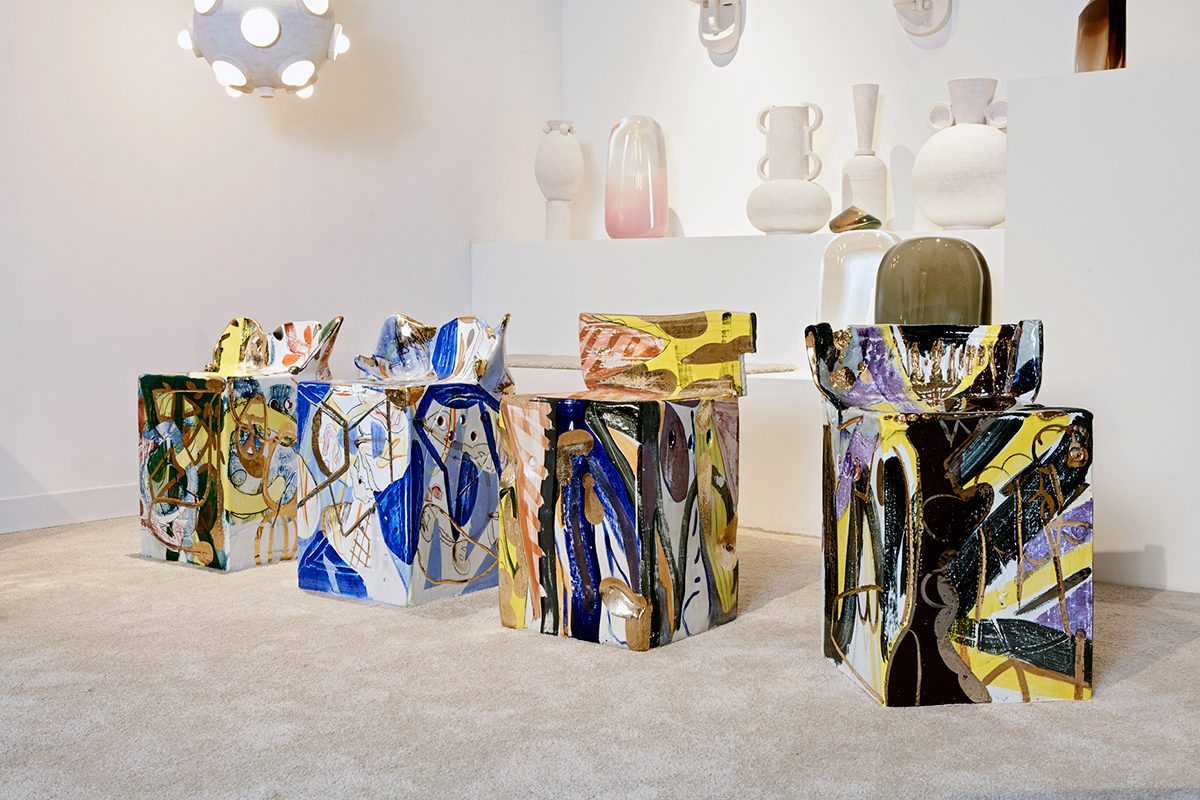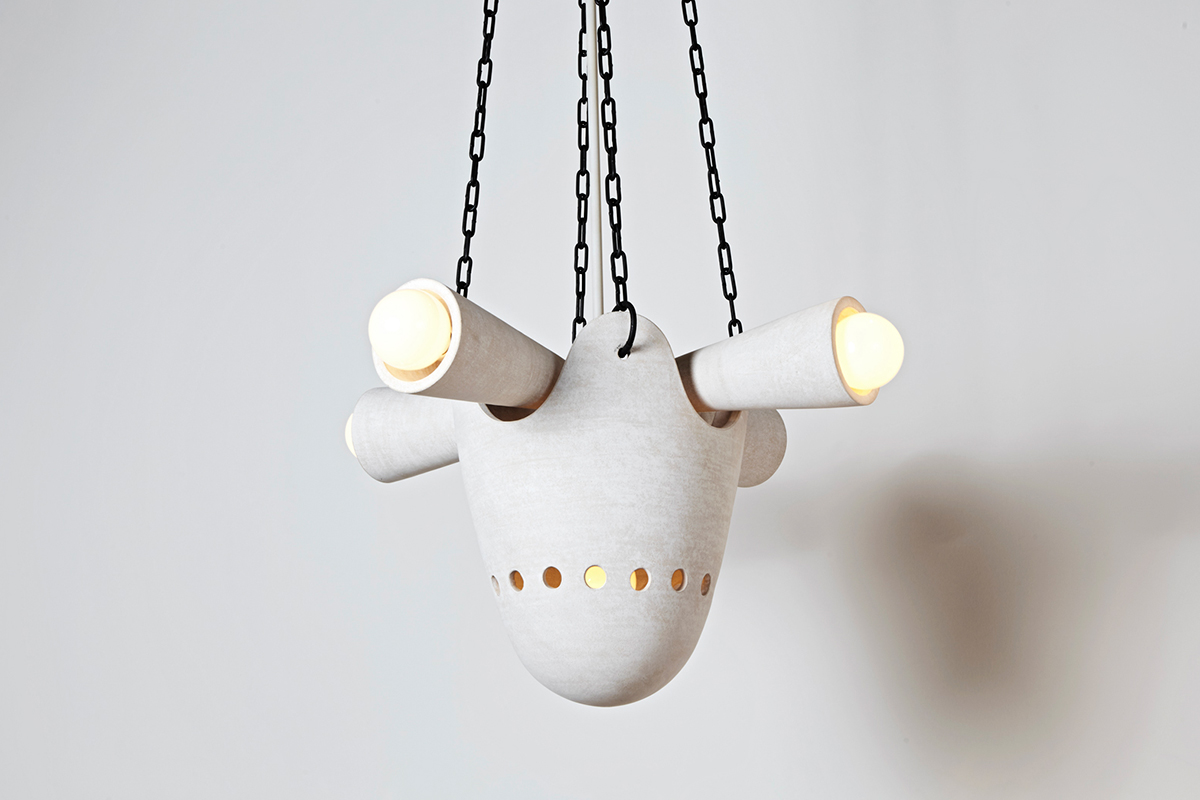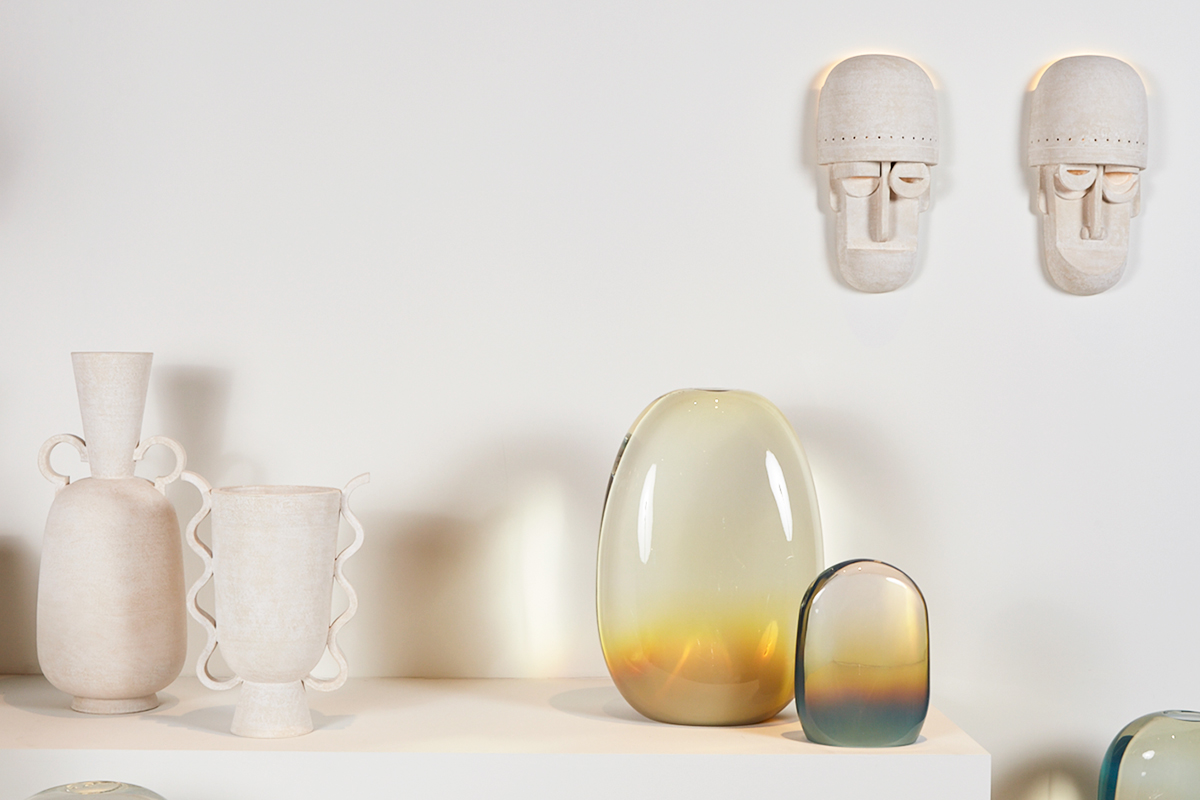
Process & Materiality at Design Miami 2017
There are few words as misused and misunderstood as design. Over the years, the word has come to represent, among many others things, an obsession with the finished product. Flourishing in tandem with late stage capitalism, design - much like art - is often most associated with a focus on exteriority, function, conformity and commercialism.
But today, there are plenty of young creatives for whom the word design remains very much a verb. For Design Miami 2017, The Future Perfect has presented a small group of process driven designers and artists who create work based on their unique relationship with, and fidelity to, their chosen material. “Process is everything in my work,” says Brooklyn-based artist Reinaldo Sanguino, who creates, among other items, one-of-a-kind chairs made entirely from clay. In Sanguino’s studio, “every step determines the next and every finished work provides [me with] elements for future use.”

Ceramic chairs by Reinaldo Sanguino. Photography by Joseph De Leo.
“Anyone who makes something by hand is deeply involved in the process of making and surrendering to the materials.”
The same evolutionary spirit pervades the work of ceramicist Eric Roinestad, who looks to the future as well as the past in order to create his arresting sculptural collections. “Anyone who makes something by hand is deeply involved in the process of making and surrendering to the materials.” Roinestad, who debuts an ambitious new collection of lighting and vessels, says. “My pieces are informed by my own love of art history, design and architecture and my particular challenge is trying to bridge the eras of the past and connect them to the present.”

HL08 by Eric Roinestad. Photography by Joseph De Leo.
Designer Chris Wolston’s singular process is simultaneously reverential and subversive. The jumping off point for his new collection involved collecting aluminum cans and other recycled items from around the barrios of Medellin. This unorthodox approach continued to the next phase of production, where the matter was transformed into furniture through Wolston’s application of traditional sand casting. He says: “I like the concept of taking a low-tech simple process and transforming it to make a complex kind of work. I think of my work as relational sculpture, I hope to create that same kind of discovery in the viewer.”

Console by Chris Wolston. Photography by Joseph De Leo.
Even though the artists presented all are possessed by process, the finished works presented offer a rich visual and physical experience for the beholder. One’s perception of traditional glass making may require a reassessment after experiencing the large scale blown glass tables and dreamlike objects created by John Hogan, who elevates the pure optical qualities of glass with bold color ways and cold working. “Experimentation is the core of my work,” says Hogan, who also records every element of the creation process. “I work with various systems and document my process, [which is] to just try everything and put it on the table. Documentation is really important, because maybe something initially doesn’t seem promising, but later you’ll realize it’s a stepping stone to somewhere else.”

Ceramics by Eric Roinestad, glass by John Hogan. Photography by Joseph De Leo.
By contrast, artist Christopher Stuart’s most recent collection, which includes the Glitch 8 Chair, looked at random occurrences and technological anomalies. “I don't think about what a finished piece looks like without first establishing a system of variables,” he says. “The end form is only a result of the initial concept, which lately has been on finding the expressiveness within today's technology. I've been interested in finding the human; the mistakes, the anomalies, the breaking point in technology that we think of as flawless.”

Photography by Joseph De Leo.
 The Future Perfect
The Future Perfect